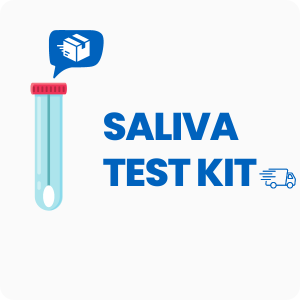Perimenopause Test
A Comprehensive Perimenopause Test You Can Do at Home
As women end their fertile years, hormones such as estrogen, progesterone, luteinizing hormone (LH), and follicle-stimulating hormone (FSH) begin to lose communication with each other.
Certain supplementation, diet, and lifestyle changes can be made to help you gently and easily go through perimenopause. Our perimenopause test can help determine if you are in fact in perimenopause.
Perimenopause Saliva Hormone Test
Saliva tests for hormones are the most accurate and affordable way to monitor perimenopausal hormones. Standard blood tests measure the “inactive” form of hormones which is less useful when making lifestyle or hormone replacement therapy decisions.
Our goal with this test is to measure the “active” form of perimenopausal hormones that the saliva glands produce. Since hormones spike up and down during perimenopause, it is important to take 2 separate saliva samples. With our perimenopause test, you will take one sample then several days later, another. A significant difference in hormone levels can indicate a perimenopausal state.
Perimenopause Symptoms: Major Cause – Adrenal Fatigue
Many studies show that symptoms of perimenopause are highly associated with dysfunctions of our blood sugar hormone system. One of these hormones, cortisol (released by the adrenal glands) is a critical factor when determining if going through perimenopause will be “easy” or “hard”. Testing for adrenal fatigue is extremely important when assessing perimenopause and menopause.
What’s Being Tested:
- Estrone 2x
- Estradiol 2x
- Estriol 2x
- Progesterone 2x
- DHEA 2x
- Testosterone 2x
- Extra- Pituitary Hormones
- Follicle Stimulating Hormone (FSH) 2x
- Luteinizing Hormone (LH) 2x
- The two samples are collected 13-15 days apart
Fasting: See test kit instructions
Specimen: Saliva, Diagnostechs Home Test Kit (Draw Location | How It Works | FAQs)
Turnaround time: 7-10 business days
Important Notes:
- This test cannot be collected or mailed from New York State
- First sample to be collected 7-10 days after flow starts; Second sample: 19-23 days after flow starts
- If you do not menstruate, the first sample can be collected on any day; the second: 13-15 days after the first collection








